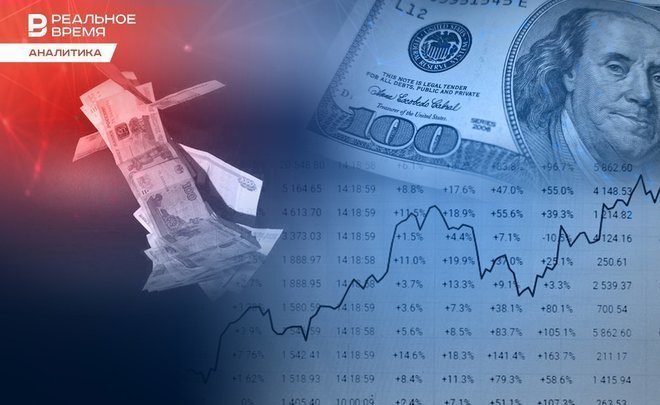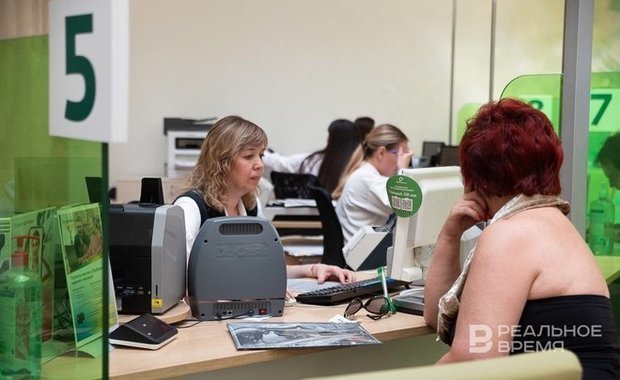Crowd-funded businesses
What is crowdfunding and why does small business need it?

Crowdfunding, or collective financing, is rapidly developing in Russia. Most often, this format is chosen by small and medium-sized businesses that have not yet grown up to be placed on the stock exchange or are not ready to wait a long time for loan approval from banks. Investors here are mostly individuals who can count on the return of part of the invested funds from the state within the framework of the Skolkovo programme. According to the results of the first half of 2023 alone, the volume of crowdfunding in Russia exceeded 14 billion rubles. The bulk of this money was attracted by companies from Moscow and the Moscow region. Tatarstan businesses are still sizing up the tool. How the collective financing market will grow, at what rates the crowd is lending today, and how crowdinvesting differs from crowdlending — in the material of the analytical service of Realnoe Vremya.
Collective financing in Russia
Today, the Register of the Bank of Russia includes 74 investment platforms that are engaged in crowdfunding. The main amount of financing falls on three or four sites, said Ekaterina Rogacheva, a representative of the Financial Market Infrastructure Department of the Bank of Russia. However, the Bank of Russia does not disclose their names.
Since 2020, when such platforms became supervised by the Central Bank of the Russian Federation, a significant growth has begun both for the operators themselves and for the volume of funds raised by a business.
According to the results of the first half of 2023, the volume of attracted funds of investors reached 14,4 billion rubles, of which 12,8 billion rubles were attracted by SMEs. 4 billion rubles have been raised through crowdinvesting (sales on securities platforms). Through crowdlending (an alternative to bank financing) — 10 billion rubles.
In general, about 40 thousand people are registered on investment platforms today, but only 5%, or about 2 thousand, are active. The number of investors has reached 80 thousand, 30 thousand of them are active. Among the persons attracting investments, the largest share is occupied by SMEs, and among those who invest — individuals.

“It is important that for individuals there is a restriction on investing on platforms if they do not have the status of a qualified investor — this is 600 thousand rubles a year," explains Rogacheva. “However, if the platform operator recognises the investor as qualified or he is an individual entrepreneur, this limit is lifted.”
Crowdinvesting is the most popular among companies from Moscow and the Moscow region. In total, small and medium-sized businesses from these regions attracted almost 3 billion rubles in the first half of the year. The tool is also used by businessmen of the Nizhny Novgorod region (attracted 133 million rubles in the first half of the year), Orel region (69 million rubles), Udmurtia (30 million rubles), Krasnodar Krai (24 million rubles), Ivanovo region (20 million rubles), Tatarstan (11 million rubles).
The crowdinvesting market is formed mainly by four operators of investment platforms, which account for about 90% of the market.
“Crowdinvesting gives the opportunity to raise funds quickly. Besides, the operators of investment platforms impose more soft requirements than the exchange to persons attracting investments," explains Rogacheva. “The costs for those who attract investments through platforms are also lower than on the stock exchange. For companies, this can be a preparation for IPO.”
Crowdlending, or a kind of alternative to bank financing, is in demand today in Moscow and the Moscow region (2,5 billion rubles were attracted in the first half of the year), St. Petersburg (1 billion rubles), and the Sverdlovsk Region (774,6 million rubles). Tatarstan has attracted 276,7 million rubles as part of crowdlanding.
“In the crowdlanding market, as well as in the crowdinvesting market, the largest share is occupied by three companies, which account for 90 percent of all funds raised," Rogacheva notes. “The tool is most often used by SMEs to replenish working capital.”
Businesses on Potok
Anton Steklov, a representative of ProBalance PLC, said that they had raised about 10 million rubles on the Potok platform. Getting a loan from a bank, according to his estimates, is more difficult and labour-intensive for small businesses. Crowdfunding is not as expensive as it might initially seem, he says.
“The annual rate does not reflect the effective rate of raising money. The annual rate is 24-30%, but the effective rate is less. Nevertheless, many, when they see a rate of 24-30%, refuse," explains Steklov. Although in the bank, according to him, the rates are even higher by 1,5%.

The disadvantage of such financing, in his opinion, is that for a growing business there are restrictions on raising money, so you have to go to several platforms at once. In addition, there are restrictions on the loan term — it is 12 months.
In general, this tool is more convenient for SMEs, Steklov believes. Banks require more documents and reporting, and the burden on the accounting department also turns out to be greater. Besides, the bank considers an application for 7-14 days, while the platform takes 2-3 days.
In addition, each platform has its own system for assessing the borrower, and, according to Anton Steklov, it would be good to be able to see this rating to know weaknesses and improve the business.
Anton Eremenko, the managing director of Potok.Digital, explained that Potok today offers small and medium-sized businesses several credit products at once — for example, for replenishment of working capital, for suppliers of marketplaces and for tender products. The average check for SMEs today is 2 million rubles. But in general, they can give out both 100 thousand and 20 million rubles for a period of 1 to 24 months.

According to him, Potok is ok with a small delay within a few days. However, if the delay is higher, they are already contacting the company. And a reduction in the financing rate is possible if the entrepreneur already has a history on the platform and does not take the first tranche.
800 new investors in three months
The vaccine developer and biotech company RBT attracted equity financing through the investment platform Rounds. Initially, the plans were to raise 160 million rubles on the platform to expand the vaccine portfolio and complete clinical trials of the flu vaccine.
They decided to resort to this type of financing because the company does not have revenue yet and is not ready to enter IPO, explained Rostislav Ivanishin, an investment analyst at RBT Management Company. “We had a hypothesis that there is a demand for biotechnologies in the market," he said. And the company found confirmation of it. In three months, they managed to attract more than 150 million rubles and more than 800 new investors. At the same time, smaller investors were collected through a broker — Alfa Investments.
Ivanishin noted that if the procedure was quite simple for the company, then the way to the transaction was not always completely clear to the investors of the platform. The investor had to have the status of qualified, it was impossible to immediately transfer shares to his broker, it was necessary to go through many different instances — the platform, the registrar, Skolkovo, and also there is simply no secondary market for the investor where he could trade these shares, he lists. Therefore, according to Ivanishin, the crowdinvesting procedure for investors is still quite time-consuming.
At the same time, he notes that crowdinvesting is a good alternative to IPO and, in general, can act as a preparation for it, because the company is learning publicity and reporting. “High-tech companies that enter the investment platform can attract investments in capital," he is sure.
Kirill Kosminsky, the executive director of the Association of Investment Platform Operators, calls crowdfunding a search for like-minded financial people.

In his opinion, there are great prospects for the development of social crowdfunding. At the same time, Kosminsky says that it is a myth that money raised through investment platforms is expensive for businesses.
According to his estimates, there are already more than 100 thousand investors in Russia today, so many projects have a high chance of finding funding through crowdfunding. At the same time, the delay is not critical, it does not exceed 10%. “It is impossible to lose all funds if investments are diversified," he believes.